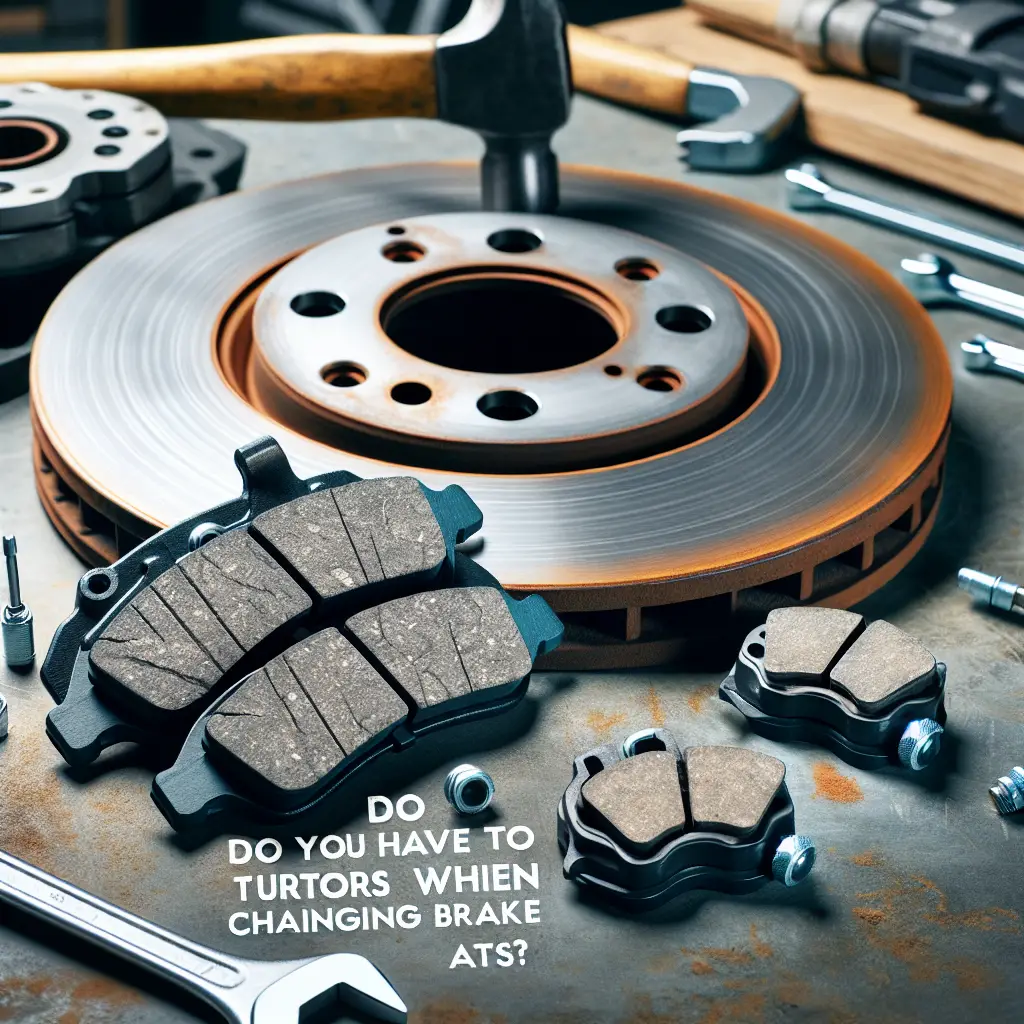Do You Have to Turn Rotors When Changing Brake Pads?
When it comes to routine vehicle maintenance, few tasks are as crucial, and as frequently debated, as brake service. Specifically, the question of whether it’s necessary to turn (or resurface) brake rotors when changing brake pads is a common source of confusion for many car owners. Let’s tap the brakes and delve deep into what you need to know.
Understanding Brake System Components
Before jumping into the main discussion, it’s important to understand what rotors are and the role they play in your braking system. Brake rotors are the disc-shaped components that sit between the brake pads. When you press down the brake pedal, the brake pads clamp onto the rotors, using friction to slow down your vehicle. Over time, this process can wear down both the pads and the rotors, creating the need for service or replacement.
The Argument for Turning Rotors
The practice of turning rotors, also known as rotor resurfacing, involves shaving off a small layer of the rotor’s surface to make it even and smooth. The argument for turning rotors when replacing brake pads hinges on ensuring the new pads have a flat and uniform surface to press against. By doing so, you can extend the life of your new brake pads and enhance braking performance. Moreover, as the team at Car and Driver explains, this process can also reduce vibrations and brake noise.
So, Do You Have to Turn Rotors?
The question of necessity is where things get a bit murky. While it’s clear that smooth, even rotors can improve braking, whether resurfacing is a must-do is often situational. Many mechanics urge customers to resurface rotors with every brake pad replacement due to the benefits mentioned above. However, some newer rotors are made with hard metals and have specific coatings that can actually be compromised by resurfacing, suggesting a replacement is sometimes the better route.
Car manufacturers often provide guidelines on rotor thickness and when resurfacing is recommended. If your rotors are within these specifications and do not show signs of significant wear or damage (such as warping or deep grooves), then you could potentially replace the brake pads without turning the rotors. But you don’t want to gamble on brake performance.
Considerations for Turning or Not Turning Rotors
Here are several considerations to keep in mind when deciding whether to turn your rotors:
1. Condition of Rotors
Examine your rotors for wear and damage. If they’re in acceptable condition, with minimal grooving and no signs of significant warping, they may not need resurfacing.
2. Type of Vehicle
Performance vehicles or cars with heavy brake usage may benefit more from rotor resurfacing, because it can maintain optimal braking effectiveness.
3. Manufacturer’s Recommendations
Always refer to your vehicle’s service manual. Manufacturers will often have guidelines suggesting whether or not rotors should be turned. In some cases, the recommendation is to replace rotors rather than resurface.
4. Cost vs. Benefit
Weigh the cost of resurfacing versus replacing. In some instances, the cost difference could be negligible, while the performance and safety benefits of new rotors could be significantly greater.
For an in-depth analysis on this topic, the folks at Consumer Reports offer terrific insights on vehicle maintenance and can provide additional data to help in your decision-making.
Replacement: A Common Solution
Due to the diminishing thickness and potential structural integrity concerns of turning rotors, many mechanics and manufacturers lean towards replacing rotors instead of resurfacing them. It’s important to consider that each time the rotor surface is machined down, it gets thinner and potentially more prone to warping. Complete replacement ensures that the rotors remain at their optimal thickness to dissipate heat and perform correctly.
The Bottom Line
Ultimately, the decision to turn or replace rotors when changing brake pads should be based on a combination of factors, including rotor condition, vehicle type, and manufacturer guidelines. A comprehensive inspection by a trusted mechanic can provide the insight needed to make the right choice for your vehicle’s specific needs.
In conclusion, you don’t automatically have to turn your rotors with every brake pad replacement, but failing to do so or opting instead for rotor replacement when necessary can lead to reduced brake performance or even safety concerns. There are times when turning the rotors is sufficient and financially prudent, but understanding the circumstances and status of your vehicle’s rotors is key to making an informed decision.
Remember that brakes are one of the most essential safety features of your vehicle, and no compromises should be made when it comes to maintaining their effectiveness. If you’re unsure, err on the side of caution and consult with a professional mechanic, or visit automotive forums like Automotive Forums for advice based on your specific scenario.
Safety should always be the priority when it comes to brake maintenance. Make sure you apply the same care and attentiveness to maintaining your brakes as you do when you’re on the road — because, after all, it’s not just about stopping your car. It’s about keeping you and your passengers safe.

